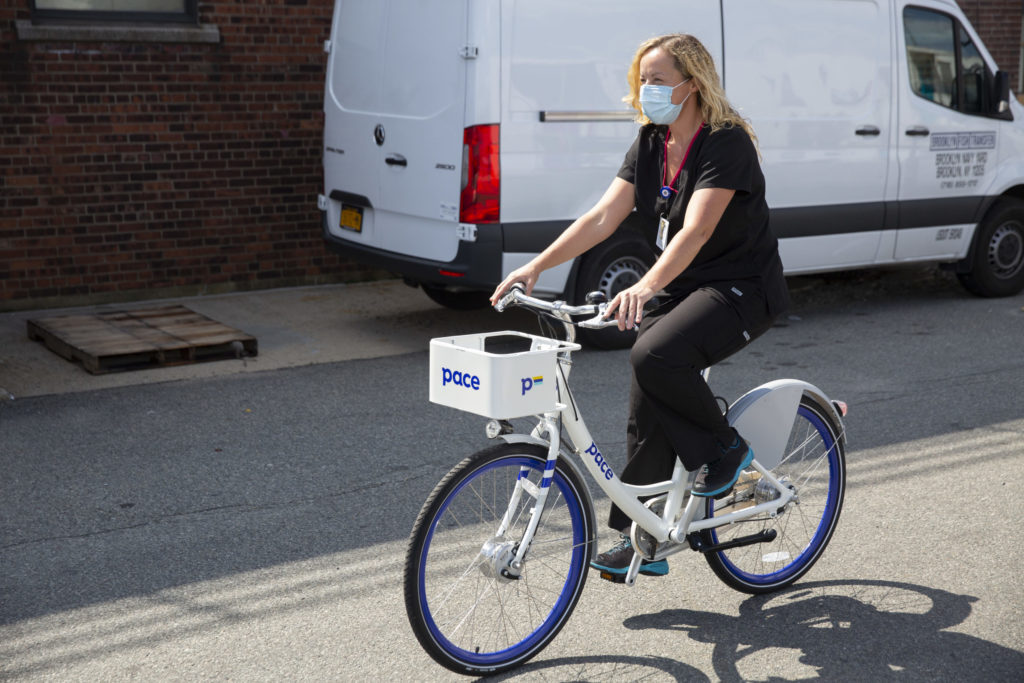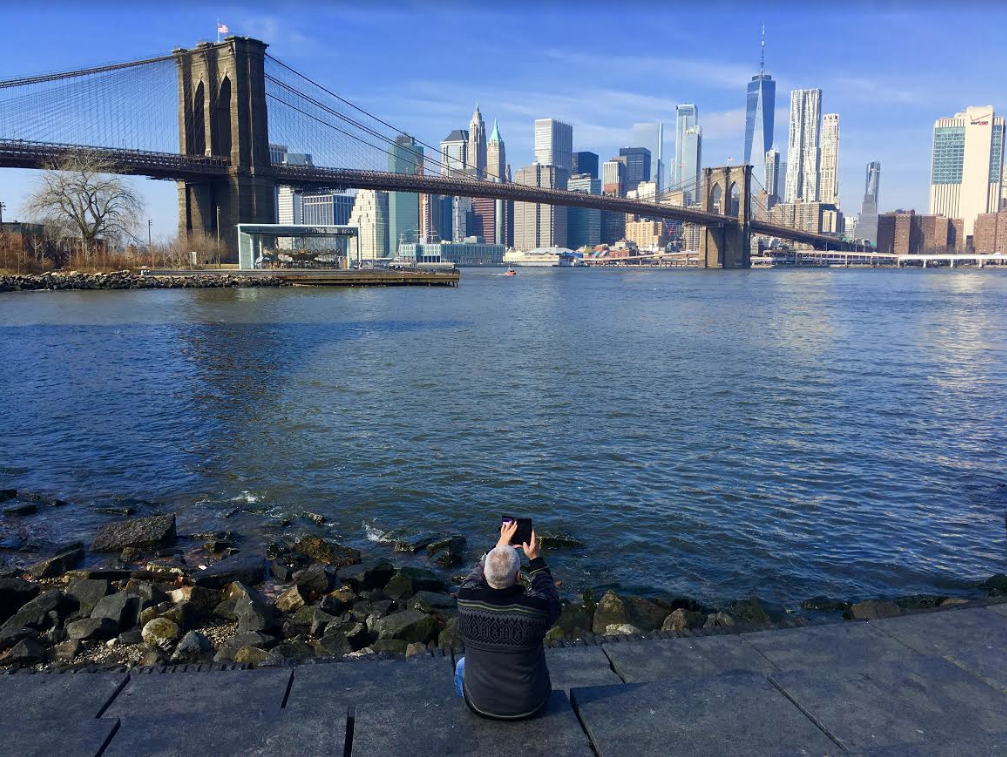E-scooters, bikes took Navy Yard by storm last week, as NYC hopes for transit solutions

Aneta Wojtowicz, a physical therapist at Montefiore Hospital, tried out her new bicycle – courtesy of TA's #BikeMatch program and Superpedestrian – on Friday. Photo: John McCarten/Brooklyn Eagle
 Boerum Hill resident Ann Villaveccs, a nurse at Brooklyn Methodist Hospital, had been trying to get her hands on a bicycle since the start of the COVID-19 pandemic. On Friday at the Brooklyn Navy Yard, her wish came true, via Transportation Alternatives’ bike match program.
Boerum Hill resident Ann Villaveccs, a nurse at Brooklyn Methodist Hospital, had been trying to get her hands on a bicycle since the start of the COVID-19 pandemic. On Friday at the Brooklyn Navy Yard, her wish came true, via Transportation Alternatives’ bike match program.
“My family and friends sent me links to the program,” she said. “I’m so happy. They don’t know how much this means.”
Villaveccs was one of 50 health care, transportation and food workers who were gifted new bicycles on Friday through the program.
